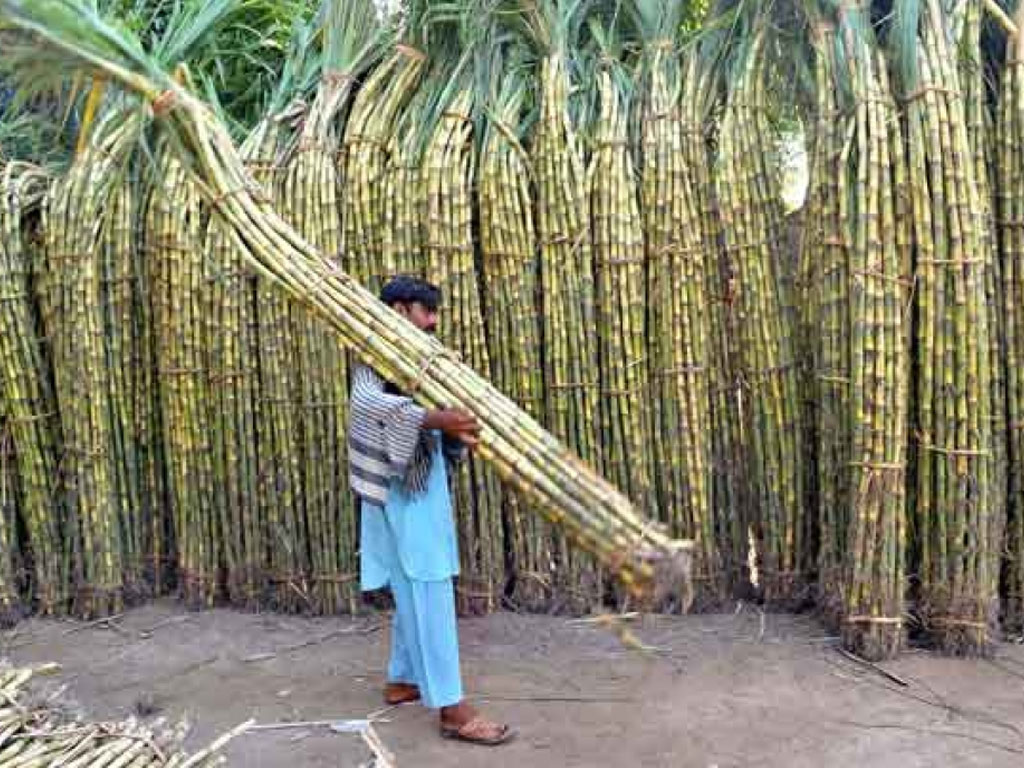Outlining a 21st century crop policy

It is easy to proclaim that Pakistan’s agriculture behaves in a rent-seeking fashion, but difficult to appreciate the incentives and nuances at play. Sugarcane is one such classic casualty; battling ghost of its past, smeared by connections of political ownership in the value chain.
If the purpose is to chart a course for a farming policy of the future, insinuations of political ownership or preferential treatment should take a backseat. Of far greater import is how did the crop get to this point, and whether any solutions exist to get it out of the quagmire.
Let’s start with the big question: does Pakistan need a sugar industry? A straight-forward no would mean catering to growing domestic demand – estimated at 5.5 million tons – by import. Remember, long-term average price in the international market has averaged at $350 per ton for the better part of last decade.
Disappearance of steady 6 million tons annual supply from Pakistan may take international prices to $550 per ton, peaks seen as recent as 2016. That’s a $2 - $3billion annual import bill right there. Net off additional dollars earned through molasses and ethanol export of $0.5billion annually. Clearly, no is not an answer.
Second, is sugarcane ill-suited for domestic agro-climatic conditions? Yes. As a water-thirsty crop, it is better suited for tropical regions such as Thailand and Brazil. Are there any alternatives to growing sugarcane? Importing raw material cane is not an option, because of its high gross tonnage. But sugar can be produced by importing raw sugar and processing it. Is it a good option for Pakistan? No.
Which brings us to why. Sugarcane may have a very high-water footprint, but as cash crops go, it is also the most climatically resilient. It can withstand both drought and flooding conditions, and still not fail. That’s nature. While optimal yield requires high fertilizer application, it survives without it as well. This becomes very relevant to growers’ choice-set when fertilizer prices are on the higher side.
Does that mean a crop ill-suited to local conditions given depleting water be encouraged? Given the choices available, why not. Sugarcane has an extensive root-system, meaning it increases the organic matter under soil, raising land productivity. It can be used as fodder and mixes well in silage. Its by-product bagasse can be used as biomass/renewable power.
Should crop-zoning be used to phase out cane cultivation from regions with depleting water availability? Average cultivable land-size in Pakistan is less than five acres. Meaning cropping patterns must take into account subsistence needs, which includes fulfilling dietary needs of both the farmer family as well as its livestock herd.
Forcing farmers to grow substitute crops – such as cotton - that risk complete crop failure due to vagaries of climate in the name of lower water footprint is not farmer-friendly-policy, but high-mindedness. Crop decisions should be based on farm economics, not on national interest objectives such as textile export growth.
Has cotton not suffered due to distorted policy preference for sugarcane? Yes, but cotton’s problems will not be addressed by simply removing cane from farmer’s portfolio. Survey of stakeholders – from growers, biotech companies, cotton traders, and textile players – show consensus that cotton crop is suffering due to poor seed varieties which are incompatible to changing climate pattern. Development of new varieties may take up to five years. In the meanwhile, growers must be given the freedom to plant crops of their choosing.
But why should that choice remain restricted to traditional crops? While higher-value crop choices such as fruits, oilseeds and vegetables may exist, they have failed to gain traction because produce markets simply don’t exist. From resilient plant varieties to lack of crop insurance means that growers will time and again return to safer choices such as sugarcane and grains, that offer guaranteed or high returns at lower levels of risk.
But isn’t high return at low risk itself not in a distortion? Yes, and industry stakeholders agree that distortions such as support price need to go, and price-setting of cane should be left to market forces. In fact, removing support price is the first step in removing perverse incentives that encourages cultivation of ‘reviled’ & ‘water-hungry’ crops such as cane. But because regulators and policy advocates are equally afraid of alienating farmers, they stop short of supporting such proposals.
Broad-based stakeholder surveys of agriculturalists and sectoral specialists could not offer any rationale for existence of support price mechanism despite best efforts. In fact, stakeholders appreciate that the crop acts as an implicit insurance for farmers when other crops fail.
If sugarcane is a poor choice for Pakistan’s climatic conditions and water security, it cannot simply be wished away. Only in a free market will growers – as risk-taking businesses – be forced to make a trade-off between risk and return of alternative crop choices.
If that means flooding the farmlands of Pakistan with cane plantation, so be it. But logic dictates that cannot be a case for very long, as excess supply will lead to poorer returns, ensuring that growers switch to substitutes. Alternatively, excess supply could create an impetus for export-oriented industry. Either option will be better than insisting on a perpetual debate of whether millers fleece growers or otherwise.





















Comments
Comments are closed.